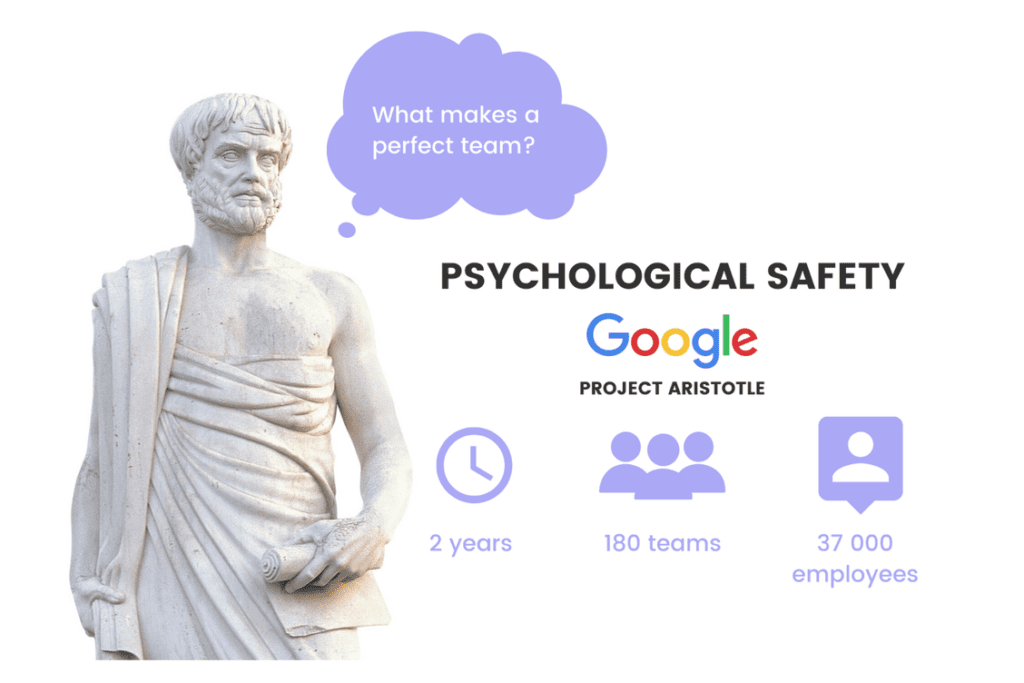Thank you to our amazing partners at Business Psych Bulletin for this excellent feature on Psychological Safety – what it is, why it matters, and what happens when it is missing.
In this month’s bulletin we are exploring the topic of Psychological Safety. What it is, why it matters, and what happens when it is missing. We will also explore the impact of Psychological Safety on driving high performance in diverse teams and hybrid working.
What is it?
- Psychological Safety occurs in a team when individuals feel comfortable to be themselves and to take risks without fear of being embarrassed, rejected or punished.
- The concept, which has recently gained popularity, was first explored in the 1960s then coined by Amy Edmondson in 1999 from her study of high-performing teams and mistake reporting in hospitals. See Amy’s Ted Talk by clicking on her photo below.
Alternatively, check out her book The Fearless Organisation where Amy Edmondson details what Psychological Safety is and provides a blueprint of how this can be built into organizations.
Why does it matter according to research?
- Psychological Safety has a number of positive outcomes that benefit an organization and its employees, including:
- Increased team effectiveness
- Higher-quality decision-making
- Greater innovation and progressive thinking
- While these benefits are critical to an organization’s success in today’s marketplace, employees often fail to share their ideas, questions, or concerns due to fear of being reprimanded when going against the status quo.
Psychological Safety gained popularity in 2017 when a team at Google took it upon themselves to study what makes a Google team effective. After two years of conducting hundreds of interviews, these employees-turned-researchers found that Psychological Safety was the number one predictor of effective teams in their organization (click the Aristotle statue to head to the study or check out the New York Times Article here).
What happens if you don’t have Psychological Safety?
When teams lack Psychological Safety, the repercussions span further than team disharmony and isolation. In American psychologist Adam Grant’s podcast Work-Life (episode ‘Is It Safe To Speak Up At Work’), he provides a stark example of how a lack of Psychological Safety unfortunately caused lost lives on a Boeing 737 flight. Because of the deep lack of Psychological Safety in the engineering teams, employees didn’t feel comfortable to raise production issues to their managers, a decision that ultimately cost innocent civilians their lives.
Check out Adam Grant’s podcast to hear the full story (just click on his face above) and learn just how vital this key ingredient is for all workplace environments. Adam Grant even interviews Amy Edmonson herself, the professor from Harvard Business School who coined the term.
| The relationship between Psychological Safety and Diversity
Psychological Safety also sheds light on how diversity relates to team performance. In Bresmon & Edmonson’s (2022) recent working paper, they conduct a study which shifts the conversation on whether diverse teams are “good” or “ bad” for performance, and instead focus on what circumstances diverse teams can perform. The findings indicated that diversity was positively associated with performance only when Psychological Safety is present. The reason is interpreted to be due to having the competitive advantage of diverse viewpoints harnessed when people feel safe to speak up and share them. |

| Psychological Safety in the Hybrid Workplace
As the landscape of where we work changes, we must also consider how we can foster Psychological Safety in this new era of work. Edmonson and Mortensen (2021) offer five strategies for managers to successfully create a culture of Psychological Safety in hybrid working:
|
Check out more from Business Psych Bulletin HERE.













